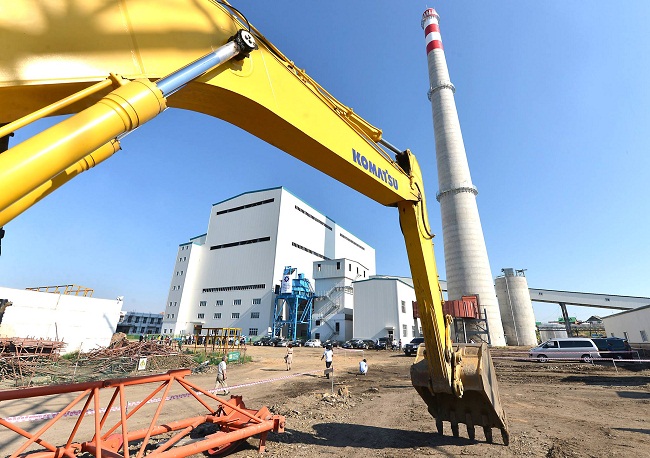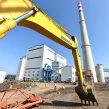
Mongolian Mega Construction Projects Push for Energy Security, Regional Connectivity
Publication: Eurasia Daily Monitor Volume: 13 Issue: 23
By:

Mongolia’s national energy program has made significant progress in the past year. According to Energy Minister Dashzeveg Zorigt, in 2015, legislation regulating the energy sector was revised, electric power imports (one-fifth of energy comes from neighboring China and Russia) were significantly cut by $9 million, and the sector’s expenditures declined by about $10 million, after electricity tariff adjustments, so that the Mongolian energy sector finally made a profit for the first time in ten years. Yet, Mongolia’s and, by extension, the North Asian region’s energy future over the next 30–40 years is intimately connected to implementing major infrastructure projects (The UB Post, January 8). One crucial element of Mongolia’s power generation network, the Ulaanbaatar Amgalan thermal power plant, which began operations last December, can now produce 116 megawatts (MW) of electricity for 50,000–60,000 of the capital’s residents. And this plant, built under a concession agreement between the Mongolian government and China Machinery Engineering Corporation (CMEC), is the basis for other major projects to be implemented (Infomongolia.com, December 7, 2015).
Speaking before the parliament in early January, Mongolian Prime Minister Chimed Saikhanbileg reported on six measures that were guiding the government’s energy policy: 1) securing parliamentary approval of the legal context by passing energy saving laws, “the Government policy on energy” with mid- and long-term targets, as well as the “State energy program”; 2) expanding and developing new energy construction projects, such as thermal power stations in Baganuur, Ulaanbaatar and Tavantolgoi; 3) increasing Mongolian electric generation; 4) managing prices and tariffs to reduce financial losses; 5) partially privatizing the thermal power stations in Ulaanbaatar, Darkhan and Erdenet to generate renovation money; as well as 6) developing foreign investment in the energy industry. During Mongolian President Tsakhia Elbegdorj’s November 2015 state visit to Beijing, the Chinese promised to provide a $1 billion soft loan to double the capacity of the Shivee-Ovoo power station. The Eg River’s hydropower station, the expansion of Erdenet city’s thermal power station, and the construction of overhead electric lines from Ulaanbaatar to the Gobi also will be implemented through Chinese soft loans. Heating pipelines in nine Mongolian provinces will be funded through a soft loan extended by South Korea (Mfa.gov.mn, November 11, 2015; The Mongol Messenger, January 8, 2016).
Major construction projects include an electric power plant for the Baganuur brown coal mine, a new hydroelectric plant on the Eg River, the Tavantolgoi electric power plant in Omnogobi province, and Ulaanbaatar’s Thermal Power Plant No. 5. The Baganuur plant, which will supply electricity to Mongolia’s central and eastern regions by 2019, had its groundbreaking ceremony on December 23, 2015. Minister Zorigt explained that “The government will not contribute to the project financing but cooperate by providing better infrastructure.” After 21.5 years operating under a Chinese concession, the plant’s ownership would be returned to the government (The UB Post, January 8).
Technical/economic feasibility studies and environmental assessments have been completed for the Eg River hydroelectric plant, to be funded through Chinese credits. Construction has commenced on roads, power lines and bridges to the site. A total of over $800 million is required, of which $100 million is for infrastructure (The Mongolia Messenger, January 8). According to Zorigt, the tender for construction soon will open (The UB Post, January 8).
However, the Eg River dam project is connected to the more controversial 300 MW Shuren hydroelectric project on the Selenge River. Supported by the World Bank, the Selenge River mega project would divert water via a 1000-kilometer-long pipeline to the Gobi region (Minewatch.mn, March 2, 2015). Russian environmental scientists and some Mongolian non-governmental organizations have labeled Mongolia’s plans for several hydroelectric plants on rivers leading into Lake Baikal as hazardous. Sergey Donskoy, the Russian minister of natural resources and ecology, said: “Due to the fact that the Selenga is in the drainage basin of Baikal, the implementation of the projects would adversely affect the unique eco-system of the lake.” Russian President Vladimir Putin himself has promised to personally monitor the situation. Minister Zorigt has responded that Mongolia has no plans for a plant on the Selenge itself, although the Eg River is a left tributary (Siberiantimes.com, May 29, 2015).
To replace imported Chinese power for the enormous Oyu Tolgoi (OT) copper-gold mine, the Rio Tinto–Mongolian-owned venture has agreed to purchase power from a planned 450 MW Tavan Tolgoi (TT) power station via a 150 km transmission line (Infomongolia.com, July 3, 2014). The Mongolians are expected, in 2016, to offer a tender for the new plant with government financing not exceeding one-third of project equity. The Ulaanbaatar Thermal Plant No. 5 signed a power purchase agreement (PPA) in July 2015 with Posco Energy of South Korea and partners Engie (formerly GDF Suez SA) of France, Sojitz Corp. of Japan, and Mongolia’s Newcom Group—the first private-public partnership in the energy sector—to finance, construct, and operate it for 25 years. This $1.4 billion power station could be operational by 2020 (News.mn, July 30, 2015).
Finally, in December an agreement for $53.8 million of investment for the Erdenet Thermal Power Plant (ETPP), which supplies the giant Mongol-Russian copper mine, was announced by China’s Hunan Industrial Equipment Installation (HIEI) and the Ministry of Energy. Around 85 percent of the investment is a Chinese concessional loan (to be recovered in 7.5 years), with the remaining financed by Development Bank of Mongolia. Expanding the plant’s capacity should double or triple energy production for 25–30 years, compensate for shortages in the electric power supply, and reduce the importation of Russian electricity (The UB Post, December 11, 2015).
Mongolia has set a goal to supply some 20 percent of its energy consumption with renewable energy sources by 2020 and 30 percent by 2030. Its largest renewable energy project now is the 50 MW Salkhit wind farm, with an investment of over $130 million. However, the drive for larger hydro- and coal-fueled plants is spurred by Mongolia’s desire not only to be energy diversified and self-sufficient, but also to utilize its geographical location when approaching energy, infrastructure and transportation connectivity. According to Minister of Roads and Transportation Munkhchuluun Zorigt, Mongolia presented its own Economic Corridor (EC) draft plan in early January to its trilateral partners China and Russia. His ministry, in addition to planning new railway and road routes, is studying possibilities for laying gas and oil pipelines through the territory of Mongolia (The UB Post, January 25, 2015). Long considered an isolated and remote land, Mongolia is now seeking to turn its geographic location into an economic boon even in the energy sphere.




